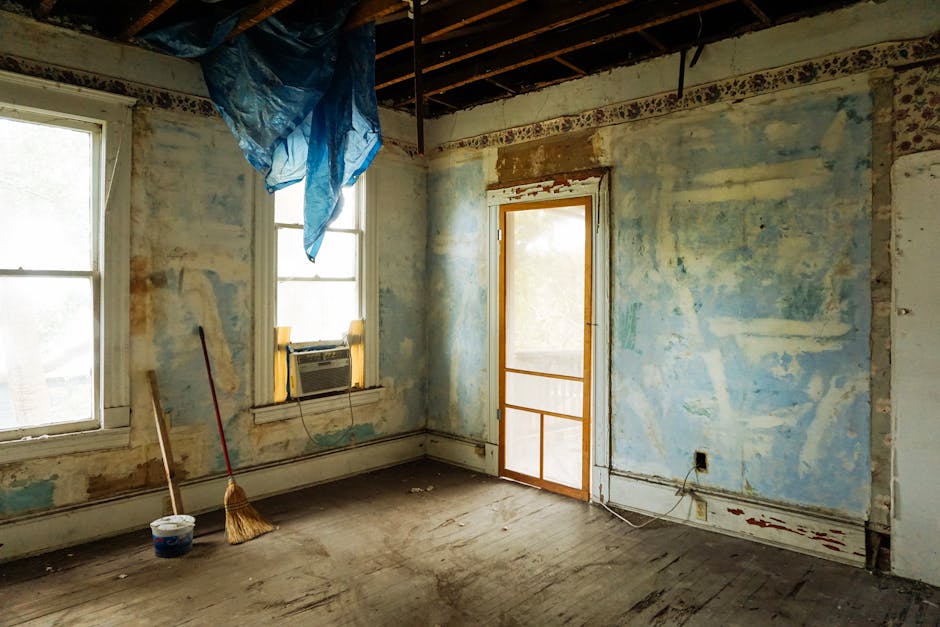Introduction
Understanding the House Flipping Market
The house flipping market has gained significant traction over the years, becoming an attractive avenue for real estate investment. You might have heard stories of individuals transforming dilapidated homes into stunning properties, scoring impressive profits in the process. By understanding the dynamics of this market, you can navigate it more effectively and increase your chances of success.
Benefits of Flipping Houses
Flipping houses offers multiple advantages, making it an appealing venture. Here are some key benefits:
- Potential for High Returns: If executed correctly, flipping houses can lead to substantial profits.
- Creative Freedom: You have the chance to express your design ideas and renovate spaces to your liking.
- Market Flexibility: With various market trends, you can choose when to enter and exit.
For instance, a friend of mine once bought a foreclosed property, fixed it up over a few months, and sold it for double the purchase price. This experience highlighted how profitable and rewarding this journey could be! Whether you’re looking for a side hustle or aiming for a full-fledged real estate career, flipping houses could be the perfect fit for you.

Setting Your Real Estate Investment Goals
Calculating Potential Profits
As you dive deeper into the world of house flipping, setting clear real estate investment goals is vital for your success. First on your agenda is calculating potential profits. This involves assessing the buying price, renovation costs, and the anticipated selling price. Consider this simple formula: Potential Profit = Selling Price – (Buying Price + Renovation Costs) For example, if you purchase a home for $150,000, spend $30,000 on renovations, and sell it for $250,000, your potential profit would be:
- Buying Price: $150,000
- Renovation Costs: $30,000
- Selling Price: $250,000
Potential Profit: $250,000 – ($150,000 + $30,000) = $70,000 This straightforward calculation can motivate you and guide your investment decisions moving forward.
Establishing a Budget
After gauging potential profits, it’s time to establish a budget. This is crucial to ensure that you don’t overspend and keep your profits intact. Here’s how to effectively create your budget:
- Identify All Possible Costs: Beyond purchase and renovation, consider closing costs, property taxes, and unexpected expenses.
- Prioritize Your Spending: Allocate funds for necessary renovations first, such as plumbing or roofing.
- Set Aside Contingency Funds: Aim for 10-15% of your budget for any unexpected surprises.
I remember when I flipped my first house; I didn’t properly plan my budget and faced several unexpected expenses that ate into my profits. Establishing a solid budget can help you avoid pitfalls and maximize your gains as you venture into the thrilling realm of real estate investment!

Researching the Housing Market
Identifying Profitable Locations
With your goals set, it’s time to focus on researching the housing market. A key aspect of this is identifying profitable locations. Real estate is all about “location, location, location,” so keep your eyes peeled for areas with potential. Here’s how to start:
- Look for Up-and-Coming Neighborhoods: Areas with new developments or rising interest typically show promise.
- Check Local Amenities: Proximity to schools, parks, and shopping centers can drive property values up.
- Monitor Job Growth: Cities with job growth attract more homebuyers, boosting demand.
For example, I once bought a house in a neighborhood that was still under the radar but had plans for new schools and parks. Within a year, its value soared!
Analyzing Market Trends
Once you have a location in mind, the next step is analyzing market trends. Understanding the housing trends can help you make informed decisions:
- Research Historical Data: Look at past sales to see how property values have changed over time.
- Study Comparable Sales: Get familiar with “comps” (similar properties) to identify what buyers are paying.
- Follow Seasonal Trends: Housing markets often experience seasonal fluctuations, so be strategic about timing your buying and selling.
By keeping an eye on market trends, you can position yourself advantageously in the house flipping landscape, ensuring that you’re not just flipping houses but doing so successfully!

Financing Your House Flipping Venture
Exploring Funding Options
Now that you’ve identified profitable locations and analyzed the market, it’s crucial to address how you’ll finance your house flipping venture. Exploring funding options is the first step in ensuring you have the capital needed. Here are some popular avenues:
- Personal Savings: This is the most straightforward option, using your own money to avoid debt.
- Hard Money Loans: These are short-term loans specifically for real estate investors, usually funded by private investors.
- Partnerships: Teaming up with another investor can help share the financial burden—and the profits!
I once partnered with a friend who had savings but wanted a more active role in real estate. This collaboration not only lightened the financial load but also brought in diverse skills.
Securing Loans and Investments
After pinpointing your funding sources, the next step is securing loans and investments. Here’s how you can effectively navigate this:
- Gather Necessary Documentation: Lenders will want to see your financial history, credit score, and a solid business plan showcasing your investment goals.
- Assess Loan Terms: Compare interest rates, repayment periods, and fees to find the best deals.
- Build Relationships with Lenders: Establishing a rapport with lending institutions can lead to better terms and quicker approvals.
When I sought a hard money loan for my first flip, building a connection with the lender led to them approving me faster than I anticipated. Understanding your financing options and securing the right loans can empower you to dive into your house flipping journey with confidence!

Finding the Right Property to Flip
Searching for Undervalued Properties
With your financing secured, it’s time for the exciting part: finding the right property to flip! The key is searching for undervalued properties that have potential for profit. Here are some strategies to uncover hidden gems:
- Look for Foreclosures or Short Sales: These properties can often be purchased below market value.
- Network with Real Estate Agents: They often have inside knowledge of properties that are undervalued or not yet listed.
- Drive Through Target Areas: You might find a neglected property that piques your interest, leading to a great opportunity.
During my last search, I stumbled upon a property that, despite its battered facade, had great bones. After some research, I learned it was a foreclosure, and I snagged it at a fantastic price!
Evaluating Potential Renovation Costs
Once you spot a promising property, the next step is evaluating potential renovation costs. This evaluation is critical to ensuring profitability:
- Get Estimates from Contractors: Talk to a few professionals for quotes on necessary repairs and renovations.
- Prioritize Repairs: Focus on areas that will give you the most return on investment, like kitchens and bathrooms.
- Factor in Contingency Costs: Reserve about 10-20% of your renovation budget for unexpected surprises you might encounter during the flip.
I learned this the hard way when I underestimated renovation costs on my first flip. Having a solid plan for evaluating these expenses can help you stay on track and maximize your profits while flipping houses!




